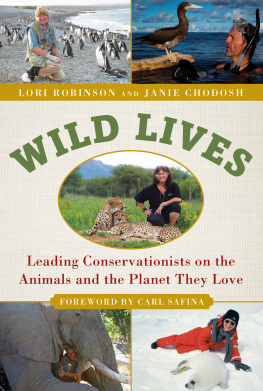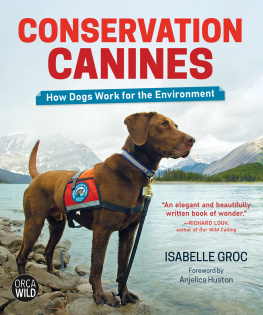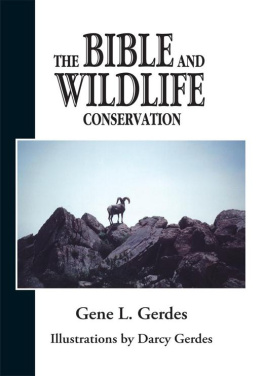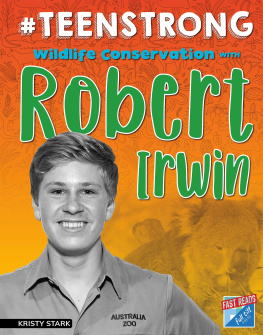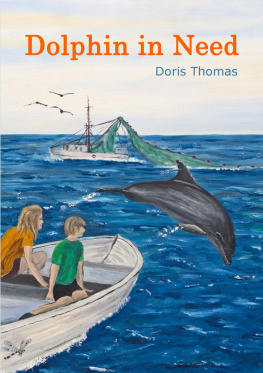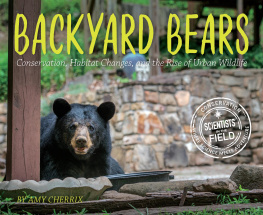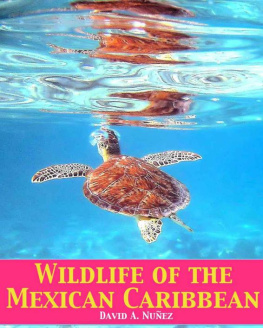Praise For
Almost every day we hear one more story about a species facing extinction, a habitat destroyed. And indeed, planet earth has never been so threatened by human actions. This is why Wild Lives is so desperately important. The people in this book are united by their belief that it is not too late to turn things around. You will be inspired by their stories. You will realize that there is hope for the future if we join the fight, if each of us does our bit.
Jane Goodall, PhD, DBE, and UN Messenger of Peace, founder of the Jane Goodall Institute
Fighting for sanctuary and safety for those most precious to them, these wildlife heroes are up against extraordinary odds, yet their courage and sacrifice remains undaunted. From melting icecaps to humid jungles, these people have dedicated their lives to helping those who can never say thank you. Robinson and Chodosh weave masterful narratives around these people, in stories that are even more astounding because they are true. Wild Lives brings into clear focus the incredible animals with whom we share the world. Be careful, it will make you want to quit your job and join the fight to save them.
Vanessa Woods, New York Times bestselling author of Bonobo Handshake
The twenty lives documented in this compelling book are truly remarkable in their diversity and commitment to conservation of species and habitats. I loved reading about each and every one of them, the different problems they encounter protecting animals and their bold and insightful solutionsa wonderful read.
Jane Alexander, actress; author of Wild Things, Wild Places
Wild Lives is a most important contribution to the broad field of conservation biology. The biographical stories of twenty major contributors who constitute a whos who of scientists who have worked tirelessly to save our planetits magnificent and awe-inspiring fauna and floraare and inspirational pieces. We are living in an epoch called the Anthropocene, often called the age of humanity. In reality, it is the rage of inhumanity. This book should be on the shelf of everyone who cares about our wondrous and fragile planet, from youngsters to seniors in all parts of the world, who want to see our nonhuman animals and plants thrive and survive despite so much that is being done that is contributing to its rapid demise. Wild Lives should be required reading for all humans, and adults should read it to youngsters, because they are ambassadors for the future. Animals and their homes need all the help they can get, and the people whose moving stories and accomplishments are covered in this book readily serve as inspirational role models for the future.
Marc Bekoff, editor of Ignoring Nature No More: The Case for Compassionate Conservation and author of The Animals Agenda: Freedom, Compassion, and Coexistence in the Human Age
Wild Lives is a salute to the people on the front lines of conservation. Having worked with animals myself, specifically elephants, many people have inspired me, but mostly it was the elephants that inspired me. Through narratives based on personal interviews with twenty of the worlds conservation champions, readers will get an insiders view to what it takes to save some of the planets greatest species.
Dr. Iain Douglas-Hamilton, co-author of Among the Elephants and Battle for the Elephants
Some people say we live in a time when there are no more environmental heroes. Fortunately for us, Wild Lives proves them wrong. The stories in this uplifting book will inspire you to make a difference. They show that heroes for the planet can be found everywhere, among both young and old. You, too, can be a hero!
Todd Wilkinson, author and environmental journalist
Great conservationists are the warriors that step up to defend our planet. Man has declared an insidious war on the earth. Each person in Wild Lives , many of whom I can call friends, is a hero who heard the whisper of this war before it became a roar; they saw the signs before they became front-page news; they heeded a call that was as yet unspoken. Their work is on the unrelenting front line of ecological destruction. They have dedicated their lives to protecting our landscapes and all the species we share them with. Mere thanks and admiration fall short. This book inspires us to follow where they lead, and to join them in striving to love and protect our earth-home.
Thomas D. Mangelsen, legendary nature photographer
Copyright 2017 by Lori Robinson and Janie Chodosh
All rights reserved. No part of this book may be reproduced in any manner without the express written consent of the publisher, except in the case of brief excerpts in critical reviews or articles. All inquiries should be addressed to Skyhorse Publishing, 307 West 36th Street, 11th Floor, New York, NY 10018.
Skyhorse Publishing books may be purchased in bulk at special discounts for sales promotion, corporate gifts, fund-raising, or educational purposes. Special editions can also be created to specifications. For details, contact the Special Sales Department, Skyhorse Publishing, 307 West 36th Street, 11th Floor, New York, NY 10018 or .
Skyhorse and Skyhorse Publishing are registered trademarks of Skyhorse Publishing, Inc., a Delaware corporation.
Visit our website at www.skyhorsepublishing.com.
10 9 8 7 6 5 4 3 2 1
Library of Congress Cataloging-in-Publication Data is available on file.
Cover design by Tom Lau
Cover photo credits: Top Left: Dee Boersma; Top Right: Gabriel Vianna; Center: Eli Walker/Cheetah Conservation; Bottom Right: David White/IFAW; Bottom Left: Kelly Landen, Elephants Without Borders.
Print ISBN: 978-1-5107-1364-2
Ebook ISBN: 978-1-5107-1365-9
Printed in the United States of America
This book is for all the wild ones with whom we share our planet and to all those dedicated to saving them.
Contents
Foreword
by Carl Safina
Its a terrible time for nature. Plants and animals are going extinct because of humans. And never mind extinction. Even for species who arent endangered, we often hear it remarked that species so-and-so is still common. The key word is still. We all know what that implies; it implies that the trend is down. Not just big beings like apes and elephants, but birds and bugs and pretty much everything.
Virtually every non-human being is at its lowest population level since we strolled in. You can intuit this immediately by looking at the proxy for speciestheir habitats. All kinds of habitatsforests, grasslands, freshwaters, coral reefs, the oceanare at all-time lows of quality and size. If were driving down everything , it means something rather startling. It means that at this point in history, humans are not compatible with Life on Earth.
Now, Im not against humans. After all, I am one. And some of my best friends are people. So I have a lot invested in humanity. But at this stage weve got to admit that were just too much of a good thing. Whats the plan? There are more than twice as many people on our planet now as when I was born. Isnt that staggering? Many people more expert than I say that the human population will continue increasing until theres at least a third more of us than there are now. And for so many who are dismally poor, who lack basic dignity and a decent shot at life, the situation looks even bleaker than numbers alone can tell. How can we take care of anything while we can barely take care of ourselves? Often it seems we cant.
Every day there is more carbon dioxide in the air. Every day the ocean is just a bit more acidic. Every day more plastic washes down rivers into the sea, where it will last basically forever. To seabirds, plastic smells like food. Turtles and whales, too, eat the bite-sized pieces that they cannot digest. Frogs and bats are dying of fungus. Forests are crashing. Poachers are out killing day and night.
Next page
